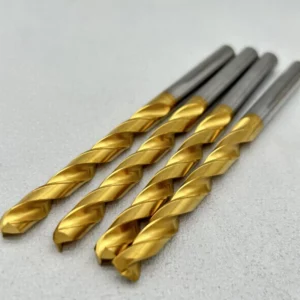Table of Contents
ToggleSolid Carbide Drill
Solid carbide drills are widely utilized in various industries for their exceptional performance and durability. They are specifically designed to efficiently penetrate hard materials such as stainless steel, cast iron, and hardened steel. Understanding how solid carbide drills are manufactured and the materials involved in their production is crucial for appreciating their quality and effectiveness. In this article, we will delve into the manufacturing process of solid carbide drills and explore the materials used.
The manufacturing process of solid carbide drills involves several intricate steps, ensuring that the final product meets the stringent quality standards required for demanding drilling applications. Let’s explore each stage in detail.
-
Raw Material Selection: The production of solid carbide drills begins with the selection of high-quality raw materials. Tungsten carbide, a compound comprising tungsten and carbon, is the primary material used for the drill’s cutting edges. Other materials such as cobalt and tantalum may also be added to enhance the drill’s hardness and toughness.
-
Powder Preparation: The selected raw materials are transformed into a fine powder through a process called mechanical crushing or chemical precipitation. This powder serves as the foundation for the subsequent manufacturing steps.
-
Mixing: In this stage, the tungsten carbide powder is mixed with a binder material, usually cobalt, to form a homogenous mixture. The binder acts as a binding agent during the sintering process, ensuring the cohesion of the carbide particles.
-
Compacting: The mixed powder is then compacted into the desired shape using high-pressure machinery. This process involves subjecting the powder to intense pressure, often in the range of several hundred megapascals (MPa), within a die. The result is a compacted “green” part that possesses the general shape of the final drill.
-
Sintering: The green part is then subjected to a sintering process, which involves heating it to a high temperature in a controlled atmosphere, typically in a vacuum or a protective gas environment. During sintering, the powdered particles fuse together, eliminating porosity and creating a solid structure. This process also allows the binder material to infiltrate the tungsten carbide particles, enhancing their cohesion and mechanical properties.
-
Grinding and Shaping: After the sintering process, the solid carbide blank undergoes precision grinding and shaping to achieve the desired dimensions and cutting geometry. State-of-the-art CNC grinding machines are used to ensure the accuracy and consistency of the drill’s cutting edges, flutes, and point angles.
-
Coating: To further enhance the performance and longevity of the solid carbide drill, a thin coating is applied to the cutting edges. Common coatings include titanium nitride (TiN), titanium carbonitride (TiCN), and aluminum titanium nitride (AlTiN). These coatings provide increased hardness, heat resistance, and lubricity, reducing friction and extending the tool life.
Solid carbide drills are meticulously manufactured using high-quality materials and advanced production techniques. The process involves raw material selection, powder preparation, mixing, compacting, sintering, grinding, shaping, and coating. Each step contributes to the final product’s exceptional quality, durability, and performance. By understanding the manufacturing process and the materials involved, users can appreciate the value of solid carbide drills and make informed decisions when selecting the appropriate tool for their drilling needs.
